The number of confirmed cases of COVID-19 in the United States climbed above 30,000 on Sunday. The dramatic increase indicates how much the virus has spread throughout the country, but also stems from more availability of test kits after weeks of delay.
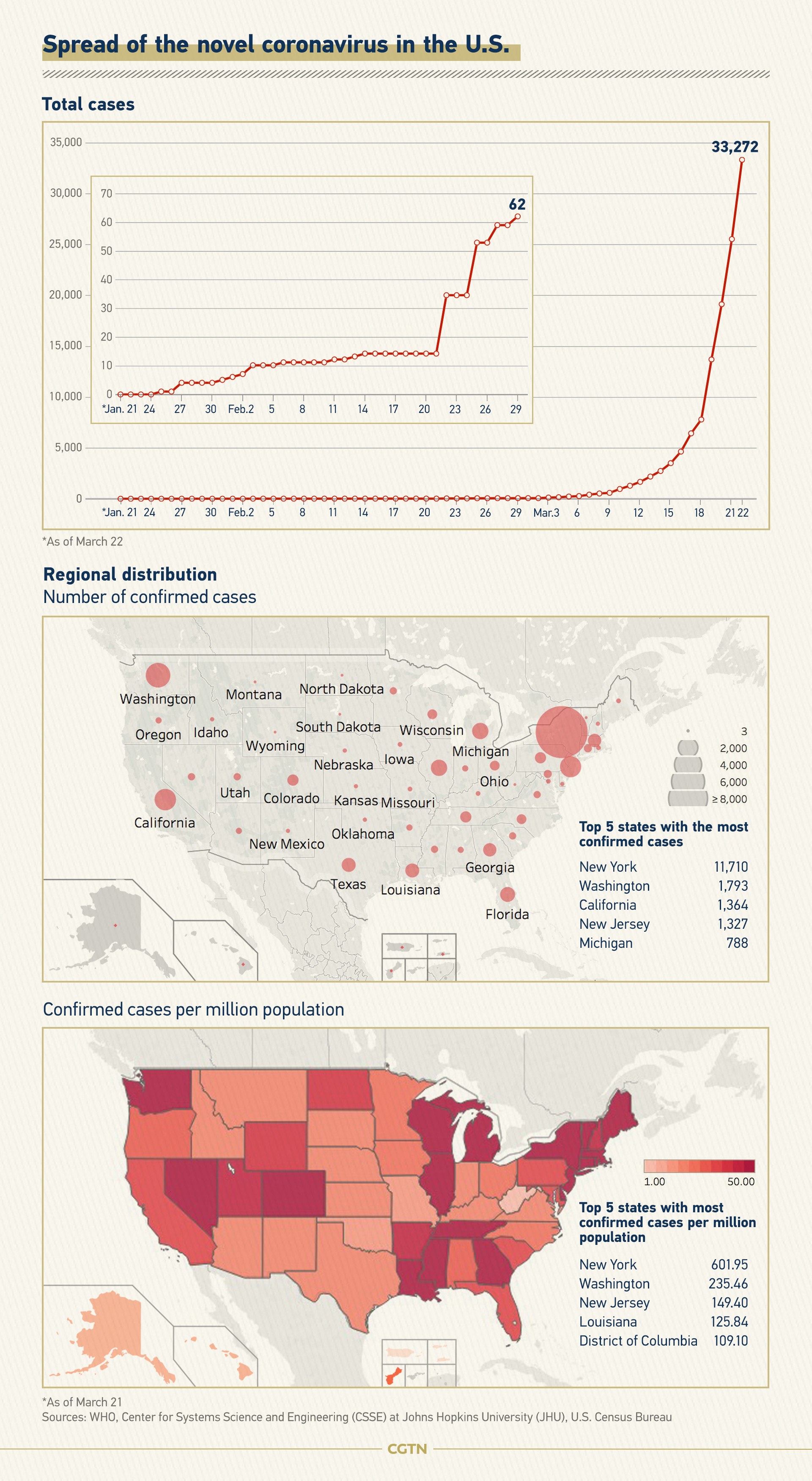
Like other countries that were hit late but are now overwhelmed with cases, such as Italy and Iran, the U.S.' failure to control the virus, in part, is the result of limited testing capacity.
Testing delays in the U.S.
Diagnostic testing for SARS-CoV-2 in the U.S. has been a recognized problem.
On Wednesday, U.S. health officials published a study which identifies several common risk factors among facilities reporting COVID-19 cases, including delayed identification and reporting of cases.
As of March 20, the CDC reported 66,411 specimens tested by CDC labs and U.S. public health laboratories. As a rule of thumb, it takes about two specimens to deliver results for a single patient, which would make this equivalent to about 33,205 people tested.
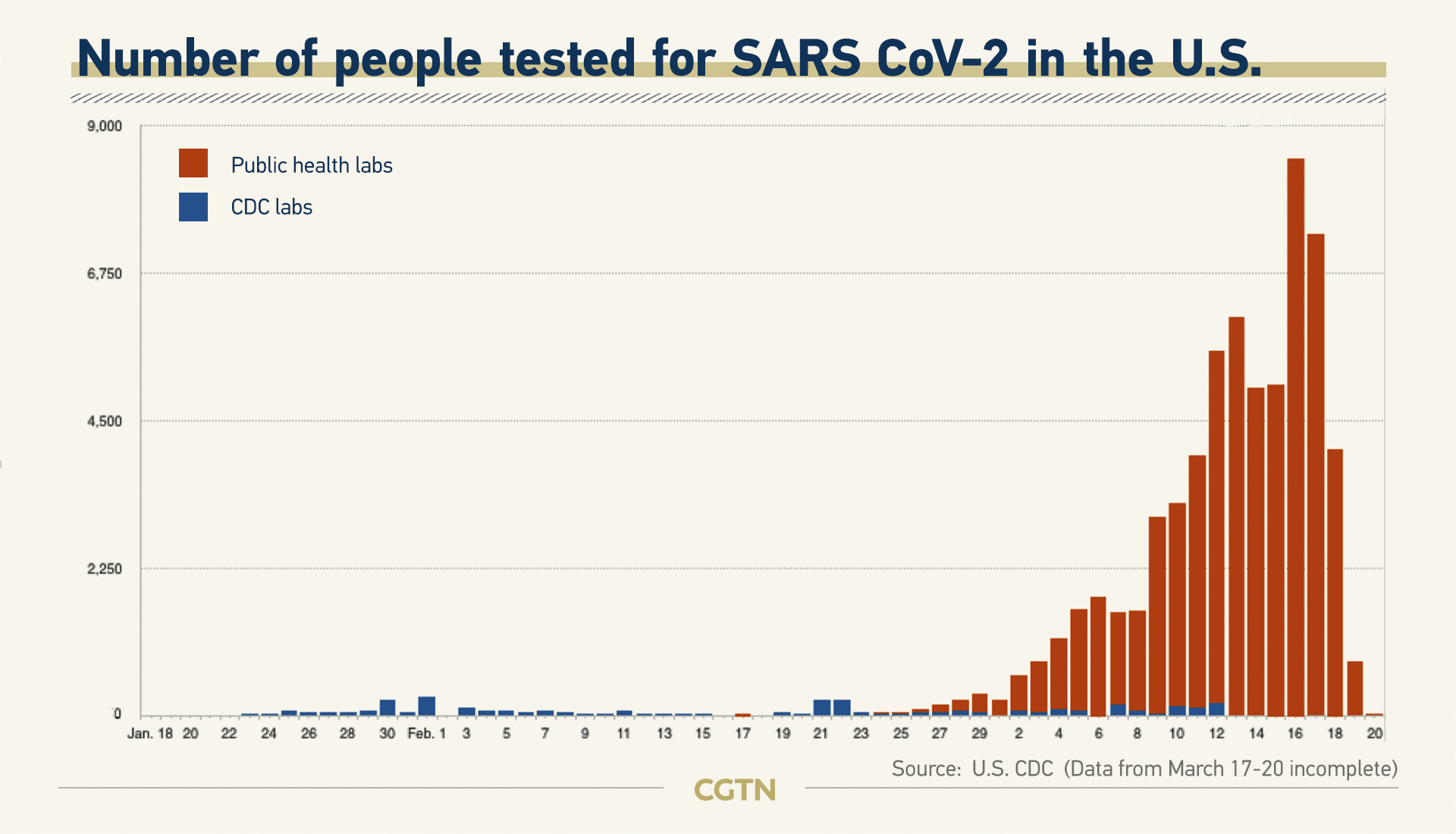
The number reflects only the number of people tested at the CDC's and public labs; private labs also provide the bulk of testing.
Wide-scale testing only started to become available nationwide close to mid-March.
Over a month after the new coronavirus was first found to be spreading among Americans, there continued to be frustration over delays in diagnostic test distribution and flawed test kits, while the U.S. government downplayed the severity of the epidemic.
U.S. response to COVID-19
Critics say a contradictory message about the threat posed by the virus from U.S. President Donald Trump has caused confusion, slowing efforts to prepare.
02:09
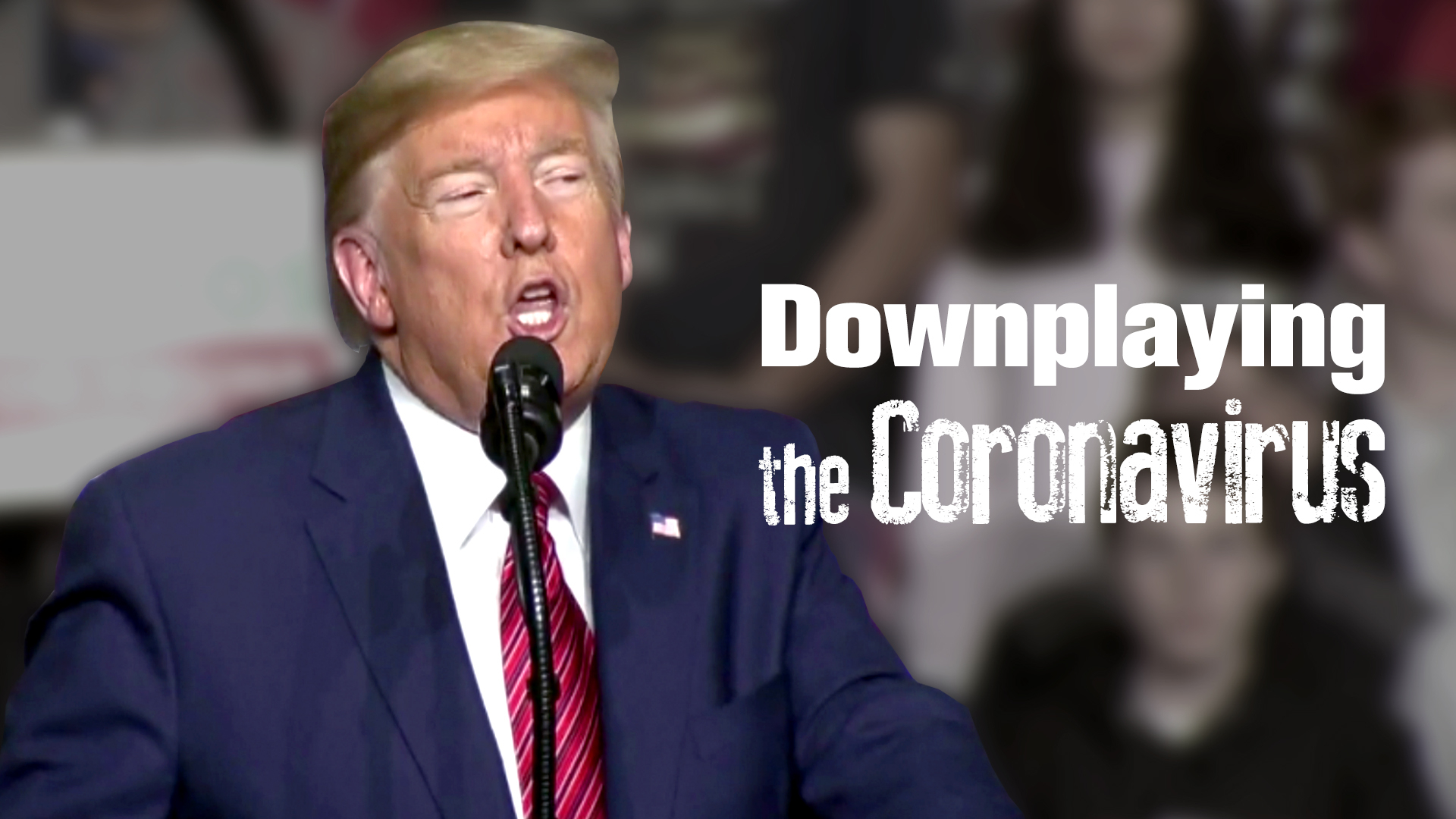
The early-stage response of the U.S. government mainly focused on travel restrictions.
Foreign nationals who have been in China, Iran, the UK, Ireland and any one of the 26 European countries in the Schengen Area within the past 14 days cannot enter the U.S.
The travel ban has already appeared to have a negative economic impact on the airline industry, and some warn that they may not be effective at meaningfully slowing domestic transmission.
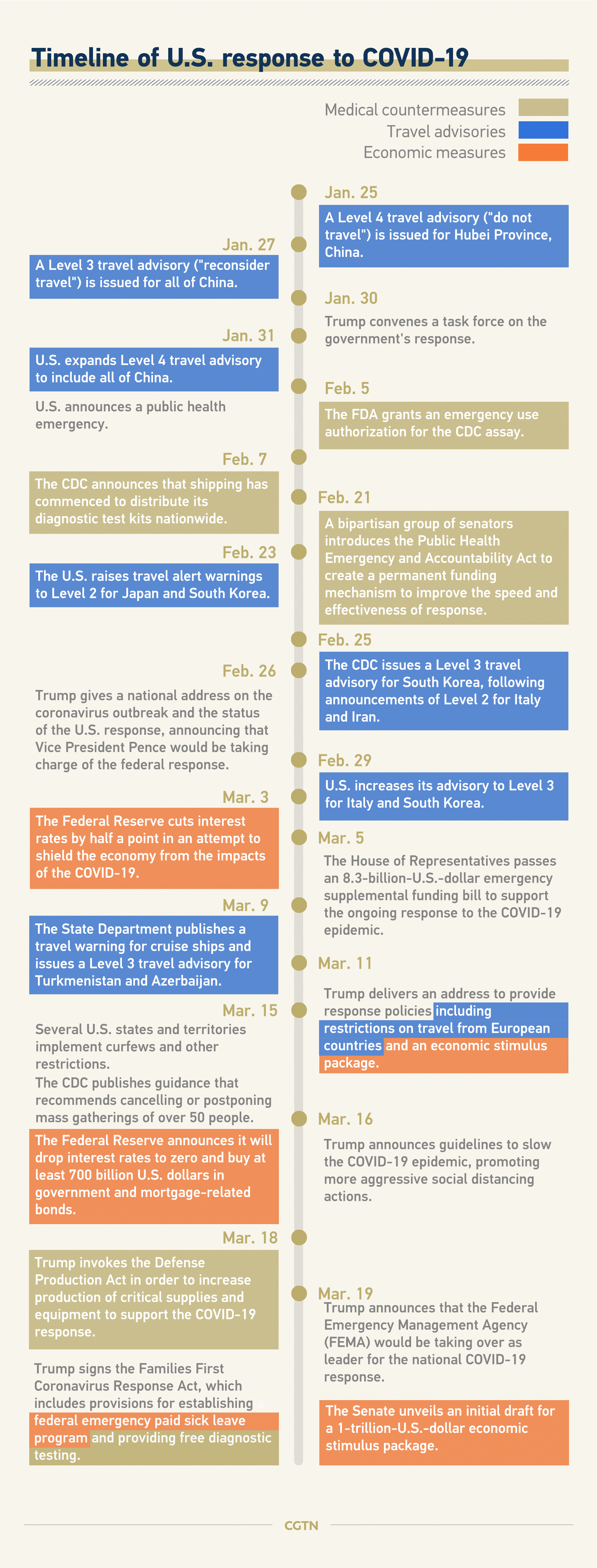
European Council President Charles Michel and European Commission President Ursula von der Leyen issued a joint statement earlier this month, condemning the U.S. travel restrictions, noting that the novel coronavirus is a "global crisis, not limited to any continent and it requires cooperation rather than unilateral action."
Later on, as the number of infected continued to expand with dismal outlooks for the U.S. economy, the government took economic measures, like cutting interest rates and a stimulus packages in a bid to stop the economy from crashing.
Economic impact
Recent wide-scale stock sell-offs reflect broad concerns that despite these economic measures the U.S. economy is likely heading toward a recession.
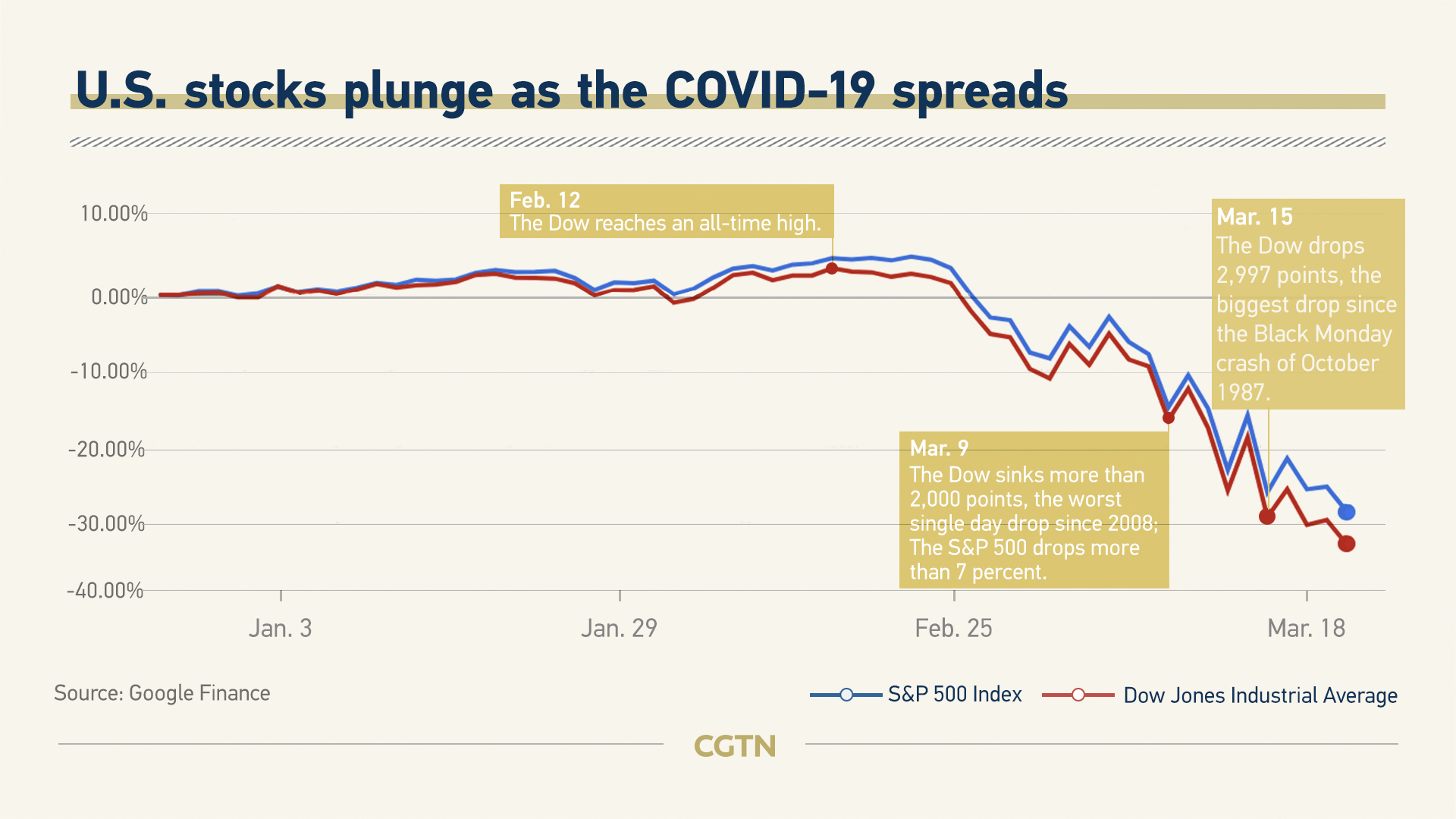
One day after the Federal Reserve aggressively cut interest rates to near zero on March 15, the Dow Jones Industrial Average dropped about 13 percent, and The S&P 500 index lost nearly 12 percent.
Most experts now believe a U.S. recession is inevitable, with its severity the only question left to be determined.
U.S. Treasury Secretary Steven Mnuchin commented that unemployment in the U.S. could climb to 20 percent without rapid efforts to stimulate the economy. Applications for unemployment across the country are climbing as workers are laid off or working significantly reduced hours due to social distancing efforts and other impacts of COVID-19.
The U.S. Travel Association projected that the ongoing coronavirus epidemic could result in a 6 percent decrease in foreign travel to the U.S. for February-April 2020, and an associated 2.5-4.25 billion U.S. dollars in economic losses, including to airlines, hotels, restaurants, and tourist attractions, the largest decrease since the 2008 financial crisis.
(For the number of confirmed cases, this article uses data from the Johns Hopkins CSSE Department dashboard, which collects local level data and provides more timely assessments of the outbreak, compared to the national level reporting organizations.)
Video: Jiang Yuting
Graphics: Chen Yuyang, Feng Yuan, Jia Jieqiong, Yin Yating, Huo Qiru